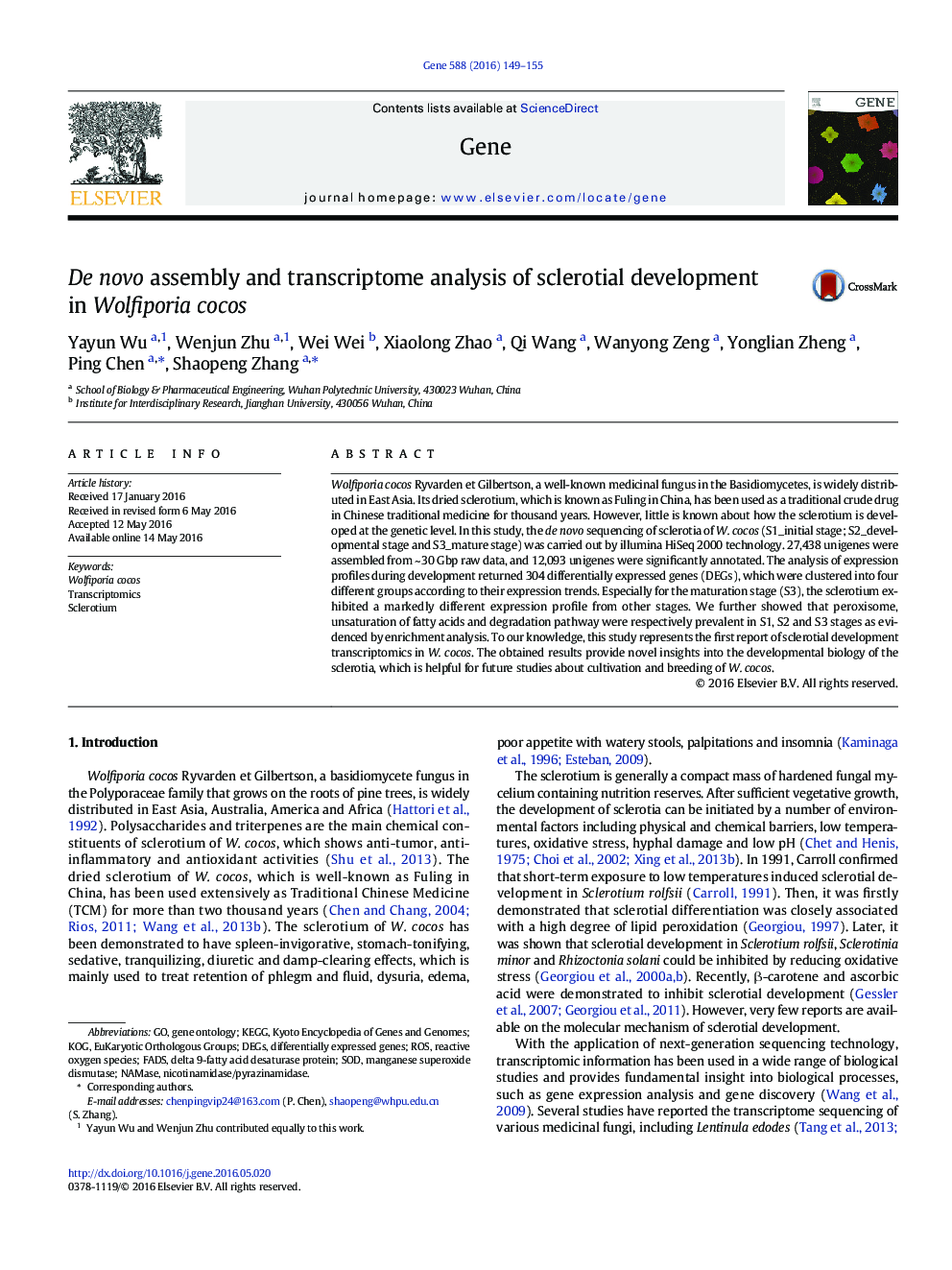| Article ID | Journal | Published Year | Pages | File Type |
|---|---|---|---|---|
| 2814895 | Gene | 2016 | 7 Pages |
•Our study represents the first transcriptomic analysis of sclerotial development in W. cocos.•304 significantly differentially expressed genes (DEGs) have been found during sclerotial development.•Pathways related to peroxisome, fatty acids unsaturation and hydrocarbon degradation were mostly represented during sclerotial development.
Wolfiporia cocos Ryvarden et Gilbertson, a well-known medicinal fungus in the Basidiomycetes, is widely distributed in East Asia. Its dried sclerotium, which is known as Fuling in China, has been used as a traditional crude drug in Chinese traditional medicine for thousand years. However, little is known about how the sclerotium is developed at the genetic level. In this study, the de novo sequencing of sclerotia of W. cocos (S1_initial stage; S2_developmental stage and S3_mature stage) was carried out by illumina HiSeq 2000 technology. 27,438 unigenes were assembled from ~ 30 Gbp raw data, and 12,093 unigenes were significantly annotated. The analysis of expression profiles during development returned 304 differentially expressed genes (DEGs), which were clustered into four different groups according to their expression trends. Especially for the maturation stage (S3), the sclerotium exhibited a markedly different expression profile from other stages. We further showed that peroxisome, unsaturation of fatty acids and degradation pathway were respectively prevalent in S1, S2 and S3 stages as evidenced by enrichment analysis. To our knowledge, this study represents the first report of sclerotial development transcriptomics in W. cocos. The obtained results provide novel insights into the developmental biology of the sclerotia, which is helpful for future studies about cultivation and breeding of W. cocos.
